TRIETHYL 1 3 5-TRIAZINE-2 4 6-TRICARBOX&
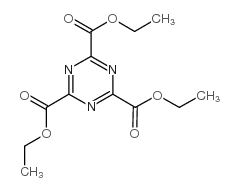
TRIETHYL 1 3 5-TRIAZINE-2 4 6-TRICARBOX& structure
|
Common Name | TRIETHYL 1 3 5-TRIAZINE-2 4 6-TRICARBOX& | ||
|---|---|---|---|---|
| CAS Number | 898-22-6 | Molecular Weight | 297.26400 | |
| Density | 1.279g/cm3 | Boiling Point | 451.1ºC at 760 mmHg | |
| Molecular Formula | C12H15N3O6 | Melting Point | 170-174ºC(lit.) | |
| MSDS | Chinese USA | Flash Point | 226.6ºC | |
| Name | triethyl 1,3,5-triazine-2,4,6-tricarboxylate |
|---|---|
| Synonym | More Synonyms |
| Density | 1.279g/cm3 |
|---|---|
| Boiling Point | 451.1ºC at 760 mmHg |
| Melting Point | 170-174ºC(lit.) |
| Molecular Formula | C12H15N3O6 |
| Molecular Weight | 297.26400 |
| Flash Point | 226.6ºC |
| Exact Mass | 297.09600 |
| PSA | 117.57000 |
| LogP | 0.40170 |
| Index of Refraction | 1.512 |
|
Section1. IDENTIFICATION OF THE SUBSTANCE/MIXTURE Product name: Triethyl 1,3,5-triazine-2,4,6-tricarboxylate Section2. HAZARDS IDENTIFICATION Classification of the substance or mixture Not a dangerous substance according to GHS. This substance is not classified as dangerous according to Directive 67/548/EEC.
Label elements
The product does not need to be labelled in accordance with EC directives or respective national laws. Other hazards - none Section3. COMPOSITION/INFORMATION ON INGREDIENTS Formula: C12H15N3O6 Molecular Weight: 297,26 g/mol CAS-No.EC-No.Index-No.ClassificationConcentration Triethyl-1,3,5-triazine-2,4,6-tricarboxylate 898-22-6---- Section4. FIRST AID MEASURES If inhaled If breathed in, move person into fresh air. If not breathing give artificial respiration In case of skin contact Wash off with soap and plenty of water. In case of eye contact Flush eyes with water as a precaution. If swallowed Never give anything by mouth to an unconscious person. Rinse mouth with water. Section5. FIRE-FIGHTING MEASURES Suitable extinguishing media Use water spray, alcohol-resistant foam, dry chemical or carbon dioxide. Special protective equipment for fire-fighters Wear self contained breathing apparatus for fire fighting if necessary. Section6. ACCIDENTAL RELEASE MEASURES Personal precautions Avoid dust formation. Environmental precautions Do not let product enter drains. Methods and materials for containment and cleaning up Sweep up and shovel. Keep in suitable, closed containers for disposal. Section7. HANDLING AND STORAGE Precautions for safe handling Provide appropriate exhaust ventilation at places where dust is formed. Normal measures for preventive fire protection. Conditions for safe storage Store in cool place. Keep container tightly closed in a dry and well-ventilated place. Section8. EXPOSURE CONTROLS/PERSONAL PROTECTION Personal protective equipment Respiratory protection Respiratory protection is not required. Where protection from nuisance levels of dusts are desired, use type N95 (US) or type P1 (EN 143) dust masks. Use respirators and components tested and approved under appropriate government standards such as NIOSH (US) or CEN (EU). Hand protection For prolonged or repeated contact use protective gloves. Eye protection Safety glasses Hygiene measures General industrial hygiene practice. Section9. PHYSICAL AND CHEMICAL PROPERTIES Appearance Formsolid Safety data pH no data available Melting point170 - 174 °C - lit. Boiling pointno data available Flash pointno data available Ignition temperature no data available Lower explosion limit no data available Upper explosion limit no data available Water solubilityno data available Section10. STABILITY AND REACTIVITY Chemical stability Stable under recommended storage conditions. Conditions to avoid no data available Materials to avoid Strong oxidizing agents Hazardous decomposition products Hazardous decomposition products formed under fire conditions. - Carbon oxides, nitrogen oxides (NOx) Section11. TOXICOLOGICAL INFORMATION Acute toxicity no data available Skin corrosion/irritation no data available Serious eye damage/eye irritation no data available Respiratory or skin sensitization no data available Germ cell mutagenicity no data available Carcinogenicity IARC: No component of this product present at levels greater than or equal to 0.1% is identified as probable, possible or confirmed human carcinogen by IARC. Reproductive toxicity no data available Specific target organ toxicity - single exposure no data available Specific target organ toxicity - repeated exposure no data available Aspiration hazard no data available Potential health effects InhalationMay be harmful if inhaled. May cause respiratory tract irritation. IngestionMay be harmful if swallowed. SkinMay be harmful if absorbed through skin. May cause skin irritation. Eyes May cause eye irritation. Signs and Symptoms of Exposure To the best of our knowledge, the chemical, physical, and toxicological properties have not been thoroughly investigated. Additional Information RTECS: no data available Section12. ECOLOGICAL INFORMATION Toxicity no data available Persistence and degradability no data available Bioaccumulative potential no data available Mobility in soil no data available PBT and vPvB assessment no data available Other adverse effects no data available Section13. DISPOSAL CONSIDERATIONS Product Observe all federal, state, and local environmental regulations. Contaminated packaging Dispose of as unused product. Section14. TRANSPORT INFORMATION ADR/RID Not dangerous goods IMDG Not dangerous goods IATA Not dangerous goods SECTION 15 - REGULATORY INFORMATION N/A SECTION 16 - ADDITIONAL INFORMATION N/A |
| Personal Protective Equipment | Eyeshields;Gloves;type N95 (US);type P1 (EN143) respirator filter |
|---|---|
| Hazard Codes | Xi |
| Safety Phrases | S22-S24/25 |
| RIDADR | NONH for all modes of transport |
| HS Code | 2933699090 |
|
~99% 
TRIETHYL 1 3 5-... CAS#:898-22-6 |
| Literature: Boger, Dale L.; Kochanny, Monica J. Journal of Organic Chemistry, 1994 , vol. 59, # 17 p. 4950 - 4955 |
|
~32% 
TRIETHYL 1 3 5-... CAS#:898-22-6 |
| Literature: Helvetica Chimica Acta, , vol. 72, p. 825 - 837 |
|
~0% 
TRIETHYL 1 3 5-... CAS#:898-22-6 |
| Literature: Bozhkova, Nina; Heimgartner, Heinz Helvetica Chimica Acta, 1989 , vol. 72, p. 825 - 837 |
|
~% 
TRIETHYL 1 3 5-... CAS#:898-22-6 |
| Literature: Chemiker-Zeitung, Chemische Apparatur, , vol. 50, p. 448 Chem. Zentralbl., , vol. 97, # II p. 883 |
|
~0% 
TRIETHYL 1 3 5-... CAS#:898-22-6 |
| Literature: Bozhkova, Nina; Heimgartner, Heinz Helvetica Chimica Acta, 1989 , vol. 72, p. 825 - 837 |
|
~% 
TRIETHYL 1 3 5-... CAS#:898-22-6 |
| Literature: Justus Liebigs Annalen der Chemie, , vol. 577, p. 77,91 |
|
~%
Detail
|
| Literature: Justus Liebigs Annalen der Chemie, , vol. 577, p. 77,91 |
| Precursor 8 | |
|---|---|
| DownStream 9 | |
| HS Code | 2933699090 |
|---|---|
| Summary | 2933699090 other compounds containing an unfused triazine ring (whether or not hydrogenated) in the structure。Supervision conditions:None。VAT:17.0%。Tax rebate rate:9.0%。MFN tariff:6.5%。General tariff:20.0% |
| 2,4,6-Triethoxycarbonyl-1,3,5-triazine |
| MFCD01419268 |
| [1,3,5]triazine-2,4,6-tricarboxylic acid triethyl ester |
| [1,3,5]Triazin-2,4,6-tricarbonsaeure-triaethylester |
| 2,4,6-tris(ethoxycarbonyl)-1,3,5-triazine |
| triethyl s-triazine-2,4,6-tricarboxylate |
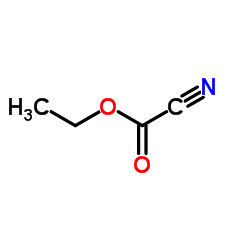

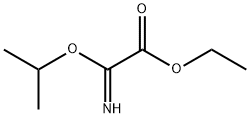




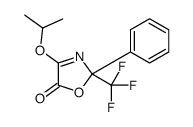

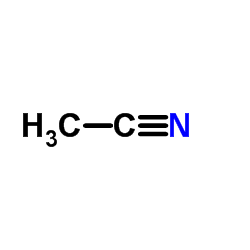
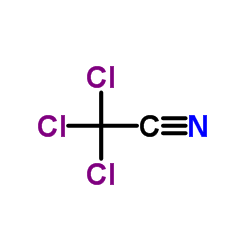

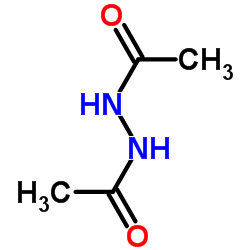 CAS#:3148-73-0
CAS#:3148-73-0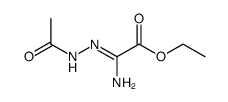 CAS#:40253-46-1
CAS#:40253-46-1 CAS#:91173-78-3
CAS#:91173-78-3![[4,6-bis(hydroxymethyl)-1,3,5-triazin-2-yl]methanol structure](https://image.chemsrc.com/caspic/090/35045-13-7.png) CAS#:35045-13-7
CAS#:35045-13-7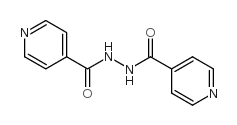 CAS#:4329-75-3
CAS#:4329-75-3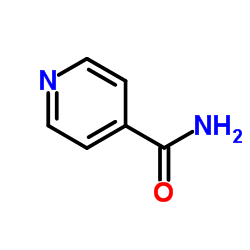 CAS#:1453-82-3
CAS#:1453-82-3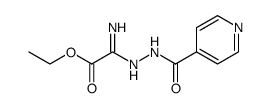 CAS#:91173-79-4
CAS#:91173-79-4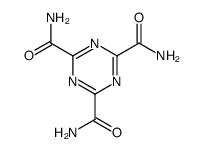 CAS#:23297-24-7
CAS#:23297-24-7 CAS#:110-21-4
CAS#:110-21-4